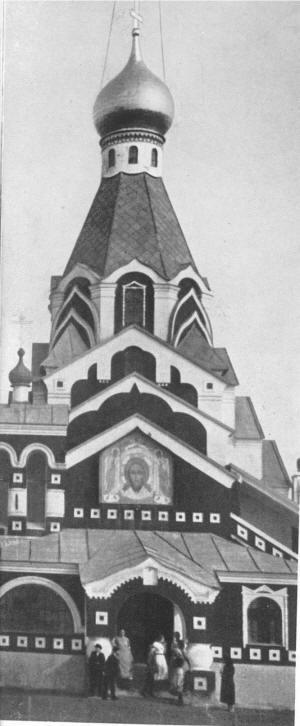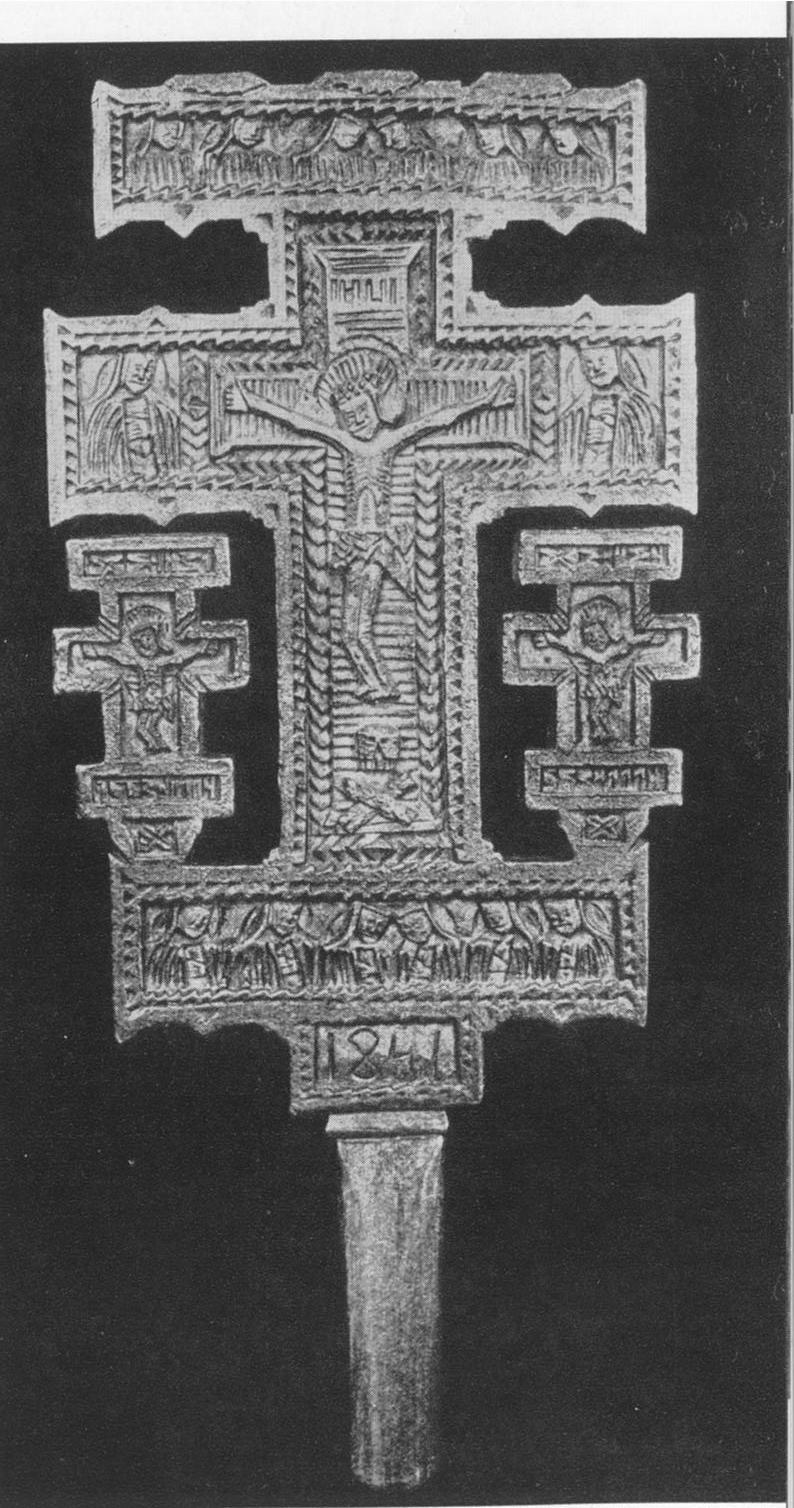Previous
UNDER
THE CARPATHIANS
HOME OF A FORGOTTEN PEOPLE
The Capital
Next
|
Previous
|
UNDER THE CARPATHIANS HOME OF A FORGOTTEN PEOPLE
The Capital |
Next
|
 ONE
of the two sizable towns in Carpatho-Ukraine is Uzhorod, the capital of
the country. It is one of the youngest cities in Europe. Before 1914 its status
was contested by another major town of the province, the historical capital
Mukacevo. But between the two wars Uzhorod was chosen as the seat of the
country’s administration and outstripped its rival in a very short time. The
centre of the town was well laid out on modern lines and a number of up-to-date
buildings were erected along the new imposing embankment. Through this
development a typically eastern country town has become an attractive modern
city. Not only its inhabitants, who numbered nearly 40,000, but all
Carpatho-Ukrainians were proud of their little capital.
ONE
of the two sizable towns in Carpatho-Ukraine is Uzhorod, the capital of
the country. It is one of the youngest cities in Europe. Before 1914 its status
was contested by another major town of the province, the historical capital
Mukacevo. But between the two wars Uzhorod was chosen as the seat of the
country’s administration and outstripped its rival in a very short time. The
centre of the town was well laid out on modern lines and a number of up-to-date
buildings were erected along the new imposing embankment. Through this
development a typically eastern country town has become an attractive modern
city. Not only its inhabitants, who numbered nearly 40,000, but all
Carpatho-Ukrainians were proud of their little capital.
Prominent among the new buildings is the former Government House, erected as the headquarters of the administration. It's façade is very modern and its interior Is beautifully equipped, especially the Parliament Chamber and the large reception hall. But many Carpatho-Ukrainians were particularly impressed by the “ "Paternoster" “ lifts which moved up and down all the time like escalators. It was quite a bold idea to install anything so unusual in that part of the world, for many a peasant visitor must have been shy of jumping into the cages of the non-stop elevator. Those who were enterprising enough to take the plunge thought it good fun, and before long the large entrance hail was full of people queuing up for a free joy-ride.
Nearby are several other modern buildings, including a secondary school, post-office, police headquarters, a centrally heated and well-appointed prison, as well as large blocks of flats which were built for the civil servants to live in. They line a wide road skirting the embankment and brightened by beds of flowers in summer.
Across the river Uz, winch is spanned by two bridges, rises a delightful building in dull red and white, crowned by a burnished cupula reflecting the sun in a dazzling blaze. This is the Russian church, built in the style of a Moscow cerkev a colourful piece of the Orient in a western setting. It houses many interesting ikons, as well as numerous amulets and relics, once belonging to Russian soldiers who lost their lives during the first World War and whose tragic death, far away from their homes, it was founded to commemorate. The Orthodox Russian priest, aided by a few devout followers, built it with his own hands. They were all refugees with very little money and they took about twenty years to complete their pious work.
The fairy tale charm of the Russian church forms a gay contrast to the twin-spired Greek Catholic cathedral on the opposite side of the river. The solid and dignified, though not austere, style of the cathedral and the adjoining ecclesiastical buildings is worthy of an Episcopal see. But once a year, at the time of the annual fair, this place of worship throbbed with tumultuous life. For three whole days people from all over the country besieged the stalls on which all manner of goods were offered for sale to eager buyers. Crowds thronged the precincts of the church and every body was bent on having a good time.
The stall-keepers knew their public and catered for everybody’s taste and pocket. There was a special demand for consecrated objects. The Holy Bible, almost a luxury for many a purse, Was bought to last a life-time at least; candles, blessed by the priest, if not by the bishop himself, were bought to be used at christenings, funerals, religious processions and on other solemn occasions ; pictures of saints and all kinds of amulets changed hands in scores, for their possession in large numbers is one of the out-ward signs of wealth. Those who could not afford the more expensive articles would buy a bottle of Holy Water which was valued as a cure for typhoid and other plagues.
All these things were sold by church officials and provided the Church with useful revenue. The CarpathoUkrainians are a religious people, willing to pay for what they believe in. But money was a scarce commodity in the country and the peasants did not mind saving a farthing or two even when buying their salvation. So they lingered about the Jewish stalls just round the corner and were tempted into buying profane candles, amulets and even the Bible there, at a lower price. If they had any misgivings, the glib Jewish dealer probably assured them that he supplied the church people too. Their conscience appeased, many good Christians bought from a Jew and had the bargain blessed by an Orthodox priest.
 On
occasions such as these, when the country came to town, it was very obvious that
the veneer of urbanisation was still rather thin in Uzhorod. Moreover, signs of
the city’s recent past could be found even in its everyday life. Not far from
the imposing boulevard women still did their washing along the banks of the Uz ;
carts and a few motor-cars were driven into the river to be sluiced with
bucketfuls of water ; men perched on high chairs could be seen fishing amid -
stream. Then there were also the periodical cattle markets, and agricultural
produce, poultry and pottery were sold in the market place on certain days. But
these peasant gatherings in Uzhorod were less colourful than in other towns of
the country, for the traditional costumes were scarcer.
On
occasions such as these, when the country came to town, it was very obvious that
the veneer of urbanisation was still rather thin in Uzhorod. Moreover, signs of
the city’s recent past could be found even in its everyday life. Not far from
the imposing boulevard women still did their washing along the banks of the Uz ;
carts and a few motor-cars were driven into the river to be sluiced with
bucketfuls of water ; men perched on high chairs could be seen fishing amid -
stream. Then there were also the periodical cattle markets, and agricultural
produce, poultry and pottery were sold in the market place on certain days. But
these peasant gatherings in Uzhorod were less colourful than in other towns of
the country, for the traditional costumes were scarcer.
Civilisation was, indeed, asserting itself. The town, where twenty-five years ago only few houses had electric light, was able to boast a modern power-station which supplied electricity on a large scale. A hard-working health service and decent drainage also helped to make Uzhorod a civilised place.
The vagaries of war were bound to arrest this promising development, and the changed status of Uzhorod, which after liberation has become a frontier town, may unmake some of the achievements of its recent past, or at least handicap its progress for some time to come.
[A rare cross in Byzantine style]